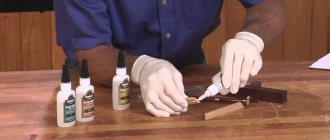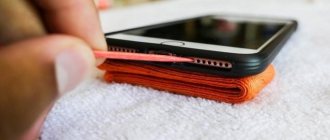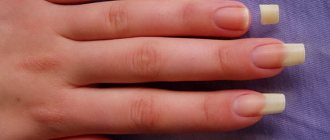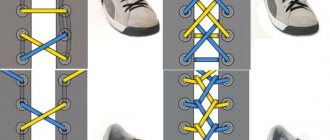Photo: topnewsrussia.ru We are all accustomed to the fact that protective glass protects the phone screen from scratches, other mechanical damage and shocks. It evenly redistributes the load over the entire surface to weaken it as much as possible. Therefore, due to the tight fit, quickly removing the protection is a real challenge. We'll tell you how easier it is to do this and what available tools will help you!
Why do you need instructions for removing glass?
Incorrect, careless removal of the protective glass can lead to a sad outcome: at a minimum, you will damage the surface of the smartphone screen, which you took such care of, and in the worst case scenario, you may injure yourself.
Many active smartphone users use improvised means when removing protective glass - knives, scissors, or simply tear the glass off the screen with a rather sharp movement.
These actions are fundamentally wrong, and we will tell you how to properly remove protection from the screen and not cause unpleasant consequences!
Results
The effectiveness of liquid glass remains in doubt. Many buyers leave negative reviews about the protective product. Independent studies have also been conducted confirming the lack of high protective properties of this liquid. However, you can also find positive properties. Liquid glass can “revive” the appearance of an old smartphone - scratches will be disguised and become invisible. Also a positive feature will be a reduction in the amount of glare and the absence of greasy stains.
If you act correctly, you can remove the glass in a few seconds.
Why remove the protective glass?
Glass protects your smartphone from shock if you drop it. The same goes for tablets. The likelihood of scratches, cracks and chips can be significantly reduced thanks to the protective glass, which in most cases takes the blow. So, why bother removing the protective glass from the screen?
- You've found a more durable screen protector.
- The protective glass is cracked.
- You are cleaning a device (possibly for sale).
As you can see, there are several reasons why you might want to remove the protective glass from your phone or tablet. But how easy is it to do?
Warning: Be careful when removing the tempered glass protective film.
Old plastic protective films can be removed quite easily. The same goes for a tempered glass screen protector, but it requires additional care, especially if it has already developed cracks.
So how do you safely remove your screen protector?
The easiest method is to stick tape over the crack. This will prevent the risk of cuts when removing the protective film. You can also use rubber gloves to provide an extra layer of protection. Ultimately, however, you just need to exercise extreme caution.
Special cases
If removing the film on a phone requires only care so as not to tear off the sensor along with it, then in the case of protective glass, more complex problems may arise. In particular, it will be necessary to remove the screen, taking into account the degree of its damage, configuration and many other conditions.
How to remove a broken screen protector from a phone
If the protective glass is not just cracked or covered with cobwebs, but the damage is much deeper, you will need to carry out the removal procedure in stages. Remove the largest fragments first, and then remove small particles. For removal, use only soft materials - a scraper, plastic card or similar objects. Do not drag glass shards across the display as this may cause scratches.
How to remove the protective glass on an iPhone
For iPhone, most manufacturers provide a set of tools that make it easier to install and replace in case of damage. Removing the protective glass should be done starting from the top of the display - this way you will not damage the button at the bottom of the smartphone. As a rule, protective screens on iPhones are highly durable, and the reaction to an impact will not lead to the appearance of fragments. Due to this, it is possible to carry out the removal procedure without additional actions to remove small particles.
Features and types of protective glass for phones
To understand how to properly handle safety glasses, you need to understand their features. Such accessories are designed to protect the smartphone screen from damage. When dropped, the glass absorbs the entire impact, so the display remains intact and unharmed in almost any situation.
Unlike protective glass, films cannot fully protect the display from falls. They can only minimize the risk of scratches on the surface.
Safety glass is a multi-level component, which does not only consist of a transparent and hard layer. Each such accessory has several layers underneath:
- Silicone. The bottom layer is soft enough for the protection to firmly adhere to the surface of the smartphone. Thanks to it, the glass continues to stay in place even if the owner actively uses the device.
- Safety. Perhaps the main layer, which is glass. This is a solid pad that absorbs shock when the phone falls and other damage occurs.
- Anti-glare. One of the additional layers, which is not found in every model of protective glass. Designed for comfortable use of a smartphone in bright sunlight.
- Containing. Another hard layer whose task is to stop the occurrence of cracks. It prevents the process from spreading, so the protective glass does not crumble into small pieces.
- Oleophobic. A special water-repellent coating that is applied to the top of the glass. Designed for comfortable sliding of your finger across the screen.
Not every protective glass can boast of having all the layers considered. Cheap models can only offer the buyer silicone, safety and containment layers, which perfectly protect the smartphone screen, but at the same time do not have a sufficient level of comfort during use. And to feel more comfortable, you can think about buying a new iPhone. The best offer is on iPavlik.
Also, accessories to create a sufficient level of display security differ in different areas. For example, according to form factor, protection is divided into:
- 2D – ordinary flat glass;
- 2.5D – flat with curved edges for more pleasant gliding of fingers;
- 3D – fully curved. Designed for models with waterfall screens.
Protective glasses in 4D, 5D, 6D and so on are nothing more than a marketing ploy by the seller and misleading the buyer.
Also, the protection may differ in the type of top layer. This is the oleophobic coating mentioned earlier, matte, private or glossy (the simplest). Finally, glass differs in strength and thickness. All these indicators affect the safety of the display during falls and other physical impacts.
How to choose
Since the pricing policy is not unitary, it can be assumed that the glasses differ in some internal properties and type, and not just in size in accordance with the smartphone.
There is no single and suitable advice for all cases on which protective glass to choose, since to a large extent this is a matter of taste and preference. But there are several positions that you can focus on when choosing.
- There are two types of protective glass: glossy and matte. The first ones are inexpensive, withstand impacts well, but cope less with scratches. The latter are distinguished by their reliable durability, do not give glare in the sun, but are purchased at a significantly higher price.
- You should always study the characteristics of the glass you choose. Greater thickness determines better protection, especially during falls. It is also worth checking it to ensure that it does not bend too much. Good glass should have the same oleophobic layer, otherwise the screen will be constantly covered in smudges and fingerprints. Expensive glass should also include special napkins for gluing and spare glass.
- If your display has rounded edges, you should choose protective glass with a 3D effect. They are less common, but provide high quality protection on the sides of the smartphone.
Results
The effectiveness of liquid glass remains in doubt. Many buyers leave negative reviews about the protective product. Independent studies have also been conducted confirming the lack of high protective properties of this liquid. However, you can also find positive properties. Liquid glass can “revive” the appearance of an old smartphone - scratches will be disguised and become invisible. Also a positive feature will be a reduction in the amount of glare and the absence of greasy stains.
Removing the glass - what you need for the job
For work, you should prepare the following set of devices in advance:
- A pick or a narrow plastic card - it is better to take 2 pieces for greater convenience;
- Suction cup with silicone base is an optional choice;
- A napkin with a lint-free surface;
- Glass cleaner - it is advisable to choose a composition containing alcohol;
- Medical gloves are an optional choice.
How to remove a screen protector without tools
If for some reason you don't have a credit card or toothpick on hand, you can try removing the glass with your fingers. Typically, a fingernail can “climb” between the protective film and the device’s display. However, even more caution must be exercised when using this method, especially with glass.
- Start by running your fingernail along the corners of the protective film.
- Select the corner that is closest to the display and move your fingernail.
- Once the screen protector begins to peel away from the display, run your fingernail along the edge.
- As air gets trapped under the glass, lift it slowly, carefully and with equal force along its entire length.
So you should have already removed the glass. If there are any pieces left on the screen, follow the steps above again.
Precautionary measures
When replacing anti-impact glass, we advise you not to ignore safety precautions. Make sure the main screen is not affected. The use of knives, paper clips, pins and other sharp or cutting objects is strictly prohibited. They may cause damage to the touchscreen.
You must act with extreme caution. It happens that one of the corners of the armored glass does not want to give in. If it is difficult to detach it from the screen, do not try to pull it away with double force. Just switch your attention to another corner.
Smartphone display elements
Before studying the direct instructions, you should understand what modern displays used in most smartphones consist of. Their components include:
- Matrix - a panel of liquid crystal or LED type that contains an array of pixels that form the final image. On the back side there is a stainless steel case, and the front part is covered with thin glass. The design includes a cable connecting the screen to the board of the mobile device.
- A touchscreen is a panel that is placed on top of the matrix and registers the user’s touch. The software combines the received information with the arrangement of elements on the screen and performs the appropriate action. When dropped, it often takes the blow and, as a result, cracks. Replacing this element is cheaper than replacing the matrix.
These components can be attached to each other in two ways:
- Through the air gap. This simpler design, previously used, allows for easy replacement of glass without the use of special tools.
- Without an air gap - the so-called OGS display, which is a single whole, combining a matrix and a touchscreen. Replacement can be done independently, but it takes more time and requires the use of special tools.
Installing a new protective glass on your smartphone screen
There are two ways to install protective glass on your smartphone screen. They provide for dry and wet glass installation, respectively. The first method is for protection using tempered glass, which does not come with a special solution.
First, you need to clean your phone screen with a lint-free microfiber cloth. Then you need to detach the glass from the sticky side from the factory protective film. After that, you need to carefully attach the protective glass to the screen, making sure that the Home button, speaker and camera holes are located exactly in their places. You can use a credit card or other tools to ensure even coverage and prevent bubbles.
Wet installation is designed to be protected by tempered glass, which comes with a spray bottle (usually containing alcohol) to assist with installation. Some people prefer to use protective films and glass this way because it completely prevents the penetration of dust and small hairs. Then you should repeat all the steps from the previous method.
Sources
- https://mikomo.ru/articles/how-to-take-off-glass
- https://SetPhone.ru/stati/kak-bezopasno-snyat-steklyannuyu-ili-plastikovuyu-zaschitnuyu-plenku-s-ekrana/
- https://KakOperator.ru/lifehacks/kak-ubrat-zashhitnoe-steklo-s-telefona
- https://geekon.media/zashhitnoe-steklo-na-telefon-obzor-instrukcija/
- https://vseplus.com/article/kak-snat-zasitnoe-steklo-s-ekrana-telefona-675
- https://mobila.guru/faqsingle/kak-pomenyat-osnovnoe-steklo-smartfona/
- https://www.1rre.ru/166372-zashhitnoe-steklo-so-smartfona-mozhno-snyat-samostoyatelno-prostymi-sposobami.html
[collapse]











